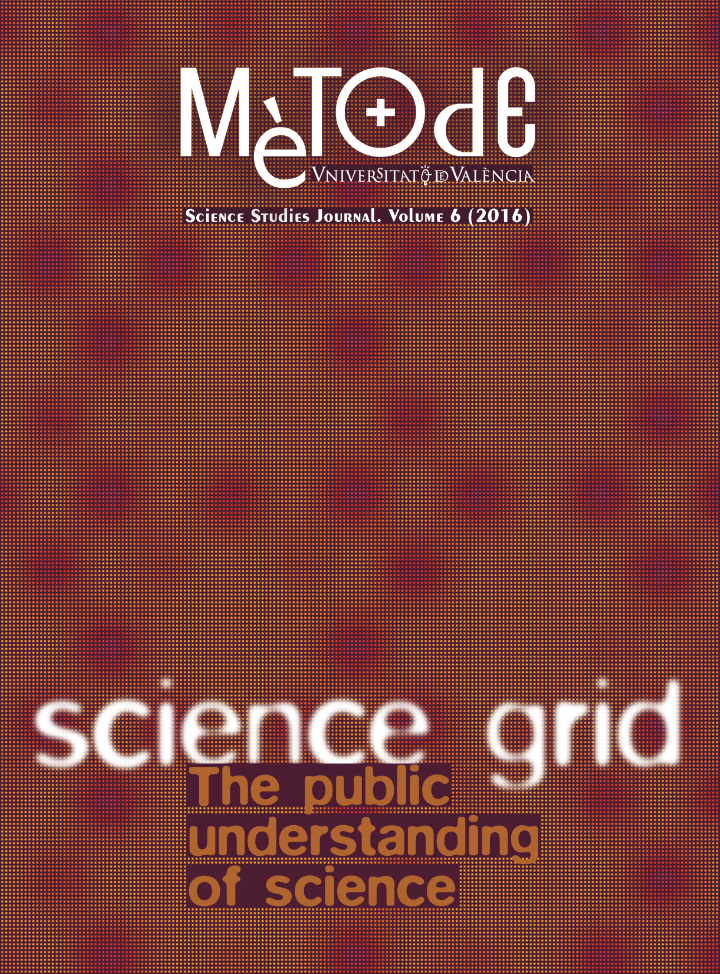Science in Verne and Poe: The Pym case
DOI:
https://doi.org/10.7203/metode.6.3315Keywords:
Poe, Verne, science and literature, Pym, South Pole Abstract
Abstract
In 1897, Jules Verne’s novel An antarctic mystery was published both in periodical form and as a complete book. It is a continuation of Edgar Allan Poe’s story The narrative of Arthur Gordon Pym of Nantucket (1838). In this article, we will use the plots of both novels to show the different images of science and technology presented by the two authors. We address both Verne’s and Poe’s approach to science, as conveyed through their fictional stories. We also discuss how Verne’s scientific descriptions are much more extensive than Poe’s, a testament to Verne’s rational and learned character, as opposed to Poe’s more fantastic and imaginative approach to science.
 Downloads
Downloads
 References
References
Cartwright, J., & Brian, B. (1999). Literature and science: Social impact and interaction. California: Abc-Clio.
Evans, A. (1988). Jules Verne rediscovered: Didacticism and the scientific novel. Connecticut: Greenwood Press.
Faivre, A. (2010). Western esotericism: A concise history. Albany: State University of New York Press.
Falk, D. (1969). Poe and the power of animal magnetism. PMLA, 84(3), 536–546.
Gabriel, J. (2009). Sobre la primera traducción de Edgar Allan Poe al castellano. 1611 Revista de Historia de la Traducción, 3, 1–4.
Lottman, H. (1996). Jules Verne. Barcelona: Anagrama.
Meyers, J. (1991). Edgar Allan Poe: His life and legacy. New York: Cooper Square Press.
Navarro, J. (2005). Somnis de ciència: Un viatge al centre de Jules Verne. Valencia: Bromera PUV.
Nieto-Galan, A. (2011). Los públicos de la ciencia: Expertos y profanos a través de la historia. Madrid: Marcial Pons.
Salabert, M. (1974). Julio Verne: Ese desconocido. Madrid: Alianza.
Standish, D. (2006). Hollow Earth: The long and curious history of imagining strange lands, fantastical creatures, advanced civilizations, and marvellous machines below the Earth’s surface. Cambridge: De Capo Press.
Tyler, J. (1992). Poe’s manual of seamanship. In R. Kopley (Ed.), Poe’s Pym: Critical explorations. London: Duke University Press.
Verne, J. (1864). Edgar Poe y sus obras. Buenos Aires: Delcardo.
Verne, J. (1897). La esfinge de los hielos. Madrid: Anaya.
Viñas, J. (2009). La meteorología en las novelas de Verne. Mundo Verne, 9, 22–27.
Downloads
Published
How to Cite
-
Abstract1164
-
PDF (Català)410
-
PDF (Español)188
-
PDF213
Issue
Section
License
![]()
All the documents in the OJS platform are open access and property of their respective authors.
Authors publishing in the journal agree to the following terms:
- Authors keep the rights and guarantee Metode Science Studies Journal the right to be the first publication of the document, licensed under a Creative Commons Attribution-NonCommercial-NoDerivatives 4.0 International License that allows others to share the work with an acknowledgement of authorship and publication in the journal.
- Authors are allowed and encouraged to spread their work through electronic means using personal or institutional websites (institutional open archives, personal websites or professional and academic networks profiles) once the text has been published.





